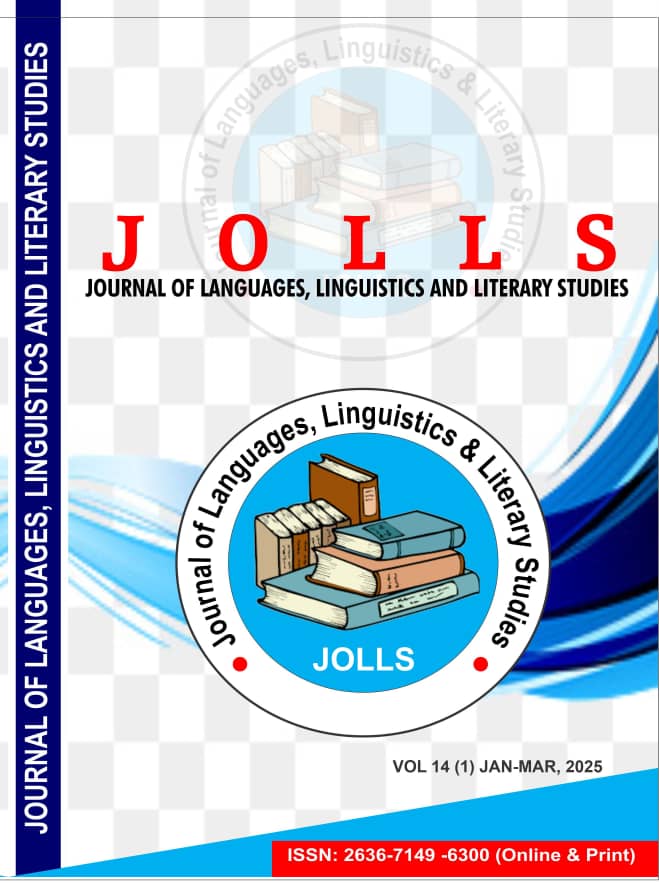EQUATING AND CONTRASTING AS CRITICAL STYLISTIC DEVICES IN HELON HABILA’S OIL ON WATER
Abstract
Equating and contrasting are critical stylistic tools for an author to portray various world perspectives. This paper examines equating and contrasting as critical stylistic devices in Helon Habila's Oil on Water. Using Lesley Jefferies's (2009) Critical Stylistic Model and a qualitative textual design, the study examines extracts from the novel to demonstrate how equating and contrasting have been used to project the theme of environmental pollution in Niger. The study analyzes and brings to the fore how both devices have been used to simultaneously portray the psychological anxieties of characters and the polluted environment while contrasting the experiences of social groups and their perspectives in the story. Through these devices, Helon Habila offers a variety of narratives that explicate the socio-political and environmental challenges of the Niger Delta area of Nigeria.
Downloads
Published
How to Cite
Issue
Section
License
Copyright (c) 2025 International Journal of Arts, Languages, Linguistics and Literary Studies

This work is licensed under a Creative Commons Attribution-NoDerivatives 4.0 International License.




